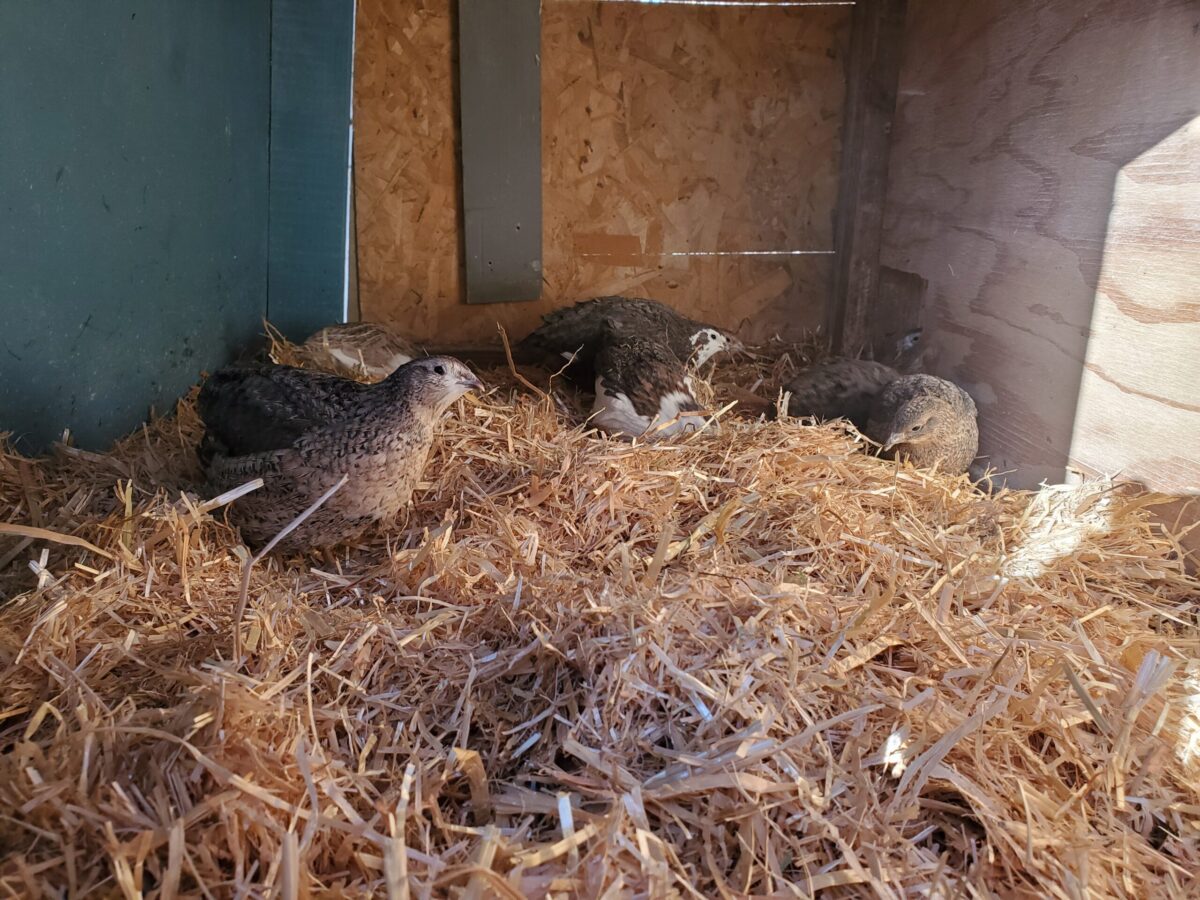As the temperatures drop and winter settles in, you might be wondering: Can quail withstand cold weather? The answer is yes! With a little extra care and attention, your quail can thrive all through winter outdoors with no supplemental heat.
Here are some tips and insights to help you ensure your quail remain happy and healthy during the colder months:
1. Winter-Ready Housing:
Quail coops should have an area that is enclosed, protected, and draft-free. Check for any gaps or cracks that might let cold air in and make necessary repairs. Add plenty of extra bedding like straw or pine shavings (straw is my go-to) to provide insulation and warmth. My cages are half open and half enclosed. As long as they have somewhere to get out of wind and snow, quail will be fine through the winter. Quite often I will go out in frigid weather only to see most of the quail sitting out in the un-sheltered part of their cage like nothing is amiss.

The quail in the enclosed part of their cage with plenty of straw bedding.
All out and not bothered that it’s 20 degrees.

2. Ventilation:
While an enclosed protected area is crucial, it’s equally important to maintain proper ventilation. Good air circulation prevents moisture and ammonia buildup, which can lead to respiratory issues. Ensure that vents are positioned in a way that allows fresh air without creating drafts directly on the birds. I like to ensure these vents are at the top of the cage where wind will not directly blow on the quail and sheltered underneath the roof material of the cage so they will stay dry.
3. Heat Source:
In most cases, quail can handle cold temperatures without additional heating. However, if you’re experiencing extremely harsh conditions, a safe heat source like a heat plate positioned away from flammable materials can provide supplementary warmth. However, I have had quail outdoors with no supplemental heat at temperatures as low as -20 and snowing with no adverse effects.
4. High-Quality Diet:
During colder weather, quail may burn more calories to keep warm. Make sure the feed is always topped off. Consider adding other grains like ground corn or treats like mealworms to provide extra energy.
5. Fresh Water:
Ensure your quail have access to clean, unfrozen water at all times. Use heated waterers or check water sources frequently to prevent freezing. My buckets always freeze at the bottom making the nipples inoperable, so I always keep one of my two favorite heated waterers in the cage from October on. They are thermostatically controlled so they only come on when needed and work great! I run an extension cord out the side of the cage.

My standard nipple waterers frozen solid at the bottom because its been 15 degrees every night. (Don’t mind the brown, we have extra iron in the well water!)
I keep a heated waterer in each cage all winter. This is the one pictured: https://www.premier1supplies.com/p/heated-poultry-waterer

6. Daily Checks:
Make it a habit to check on your quail regularly during cold weather. Look out for signs of distress, such as huddling excessively, lethargy, or any indications of illness. Overall if your quail are acclimated to being outdoors I anticipate you will have next to no issues at all. My quail are far happier out in the cold weather than I am on any given day!
